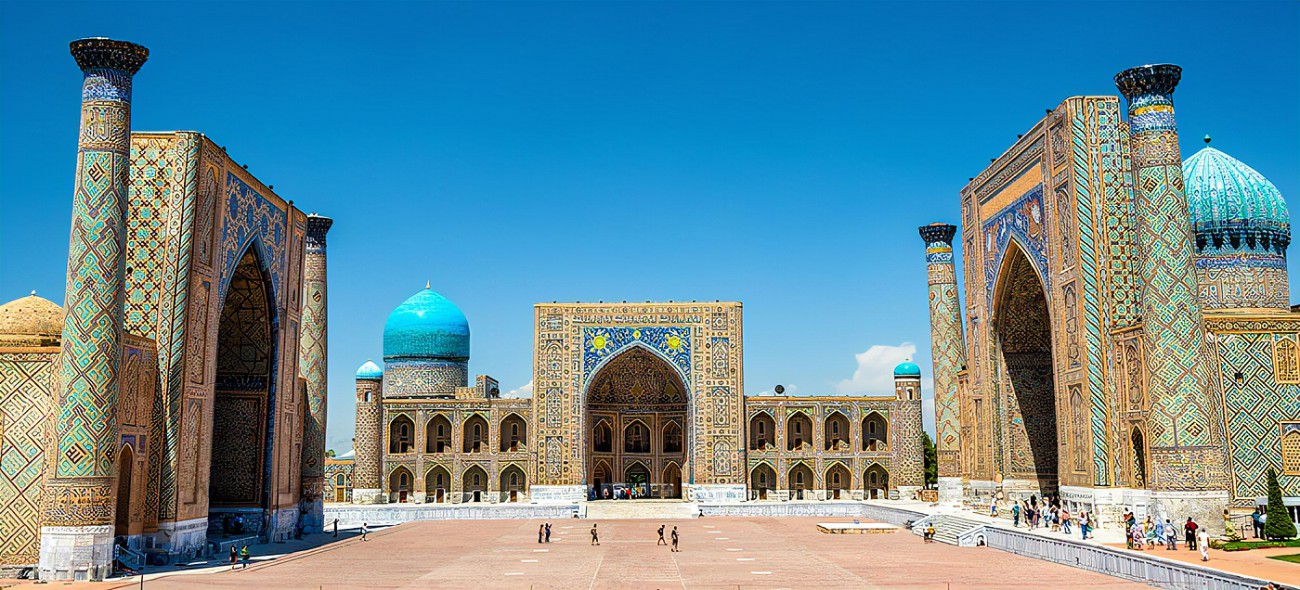Overview
Chinese Name: 乌孜别克族
English Name: The Uzbek nationality
Languages: Uzbek language 乌孜别克语, Chinese 汉语
Total population: 1.0*104 (China mainland 2022)
Distribution: Xinjiang Uygur Autonomous Region

Brief introduction
The Uzbek nationality 乌孜别克族, as one of the ethnic minorities in China, is scattered in many counties and cities in the Xinjiang Uygur Autonomous Region 新疆维吾尔自治区. Most of them live in cities and towns, and a few in rural areas.
After the founding of New China, the Uzbeks made great efforts to develop agriculture according to local conditions. In addition, the Uzbek people have frequent exchanges with people of all ethnic groups in Xinjiang and have particularly close and harmonious relations with the Uyghur people 维吾尔族 and Kazakh people 哈萨克族 which cause the mutual influence on life and culture among various ethnic groups have gradually formed many similar or even identical features to each other.

The history of the Uzbek nationality
The ancestors of the Uzbeks moved from Central Asia to Xinjiang in Chian in ancient times. Historically, the commercial activities of the Uzbeks have played a certain role in promoting economic and cultural exchanges between China’s Xinjiang and Central Asia. In particular, the ancient “Silk Road” 丝绸之路 strengthened the economic and cultural exchanges between the residents of the two places, which also made many Uzbeks choose to stay in Xinjiang.

The religion of the Uzbek nationality
The Uzbeks have long believed in Islam 伊斯兰教. Since more and more Uzbeks settled in Xinjiang in the eighteenth century, many Uzbek people donated to build some larger mosques. This also makes Islam have a great influence on the cultural education of the Uzbeks

The Cultures of the Uzbek nationality
The costumes of the Uzbek nationality 乌孜别克族的服饰
The clothing of the Uzbeks is characterized by men and women wearing various caps. Uzbek men generally wear long shirts with patterns and no buttons. Around the waist is a triangular embroidered belt embroidered with various satin, floral and cotton materials. The belts of young people are brightly coloured, while those of the elderly are more elegant.
Women, regardless of age, have braids, and wearing jewellery is a part of Uzbek women’s etiquette culture. Men like to carry delicate knives around their waists. In addition, the Uzbeks, both male and female, favour wearing small flower hats. Men’s hats are mostly dark green, black, and light blue, while women prefer white and maroon.

According to religious customs, women must wear cloaks and veils when going out. In modern times, in addition to wearing a small cap, a square head scarf is also worn, or a cross-stitched embroidered shawl is placed on the outside of the small cap.
The diet of the Uzbek nationality 乌孜别克族的饮食
The Uzbeks eat three meals a day. It is an essential dining etiquette for the elderly to sit on the top and the young to sit on the bottom. Unlike the Han Chinese 汉族 who mostly use chopsticks to grab food, the Uzbeks can use their hands to eat many foods. Of course, many Uzbeks now use chopsticks and spoons to eat, but in some pastoral areas, they still keep the habit of eating with their hands.
The Uzbeks follow the dietary taboos of Islam and eat sheep, cattle, horse meat and dairy products. Naan is the staple food of the Uzbek people which is baked with flour and salt water after being slightly fermented.

The architecture of the Uzbek nationality 乌孜别克族的建筑
Due to the dry and mild climate and low precipitation, the houses inhabited by the Uzbeks are generally rectangular earth houses with flat roofs and a slight slope. Such kind of civil structure house has thick walls and is warm in winter and cool in summer.

Since the 1980s, the government has implemented a herdsman settlement project, and the living style of Uzbek herdsmen has undergone great changes. The housing in the new village is planned and built by the government, and the houses are all brick and wood structures. In addition, the housing area is also equipped with corresponding medical, educational and other facilities, which greatly improves the living standard of Uzbek residents.
The rituals of the Uzbek nationality 乌孜别克族的礼节
The Uzbeks are very particular about etiquette and politeness. According to traditional customs, when men meet, they put their right hand on their left chest, nod and bow, and greet each other; when women of the same age meet, they put their hands on their chests, bow and greet, and sometimes hug. As for the elders, they generally kiss the cheeks of the young and greet each other. Now the handshake ceremony has become more and more popular, and on some occasions, the two kinds of etiquette go hand in hand.

The Uzbeks respect the elders and advocate knowledge. The elderly in the Uzbek ethnic group enjoy high prestige and social status. This gives the elderly a certain priority in a range of social activities. Moreover, knowledgeable people are considered intelligent, psychic, and equally respected.